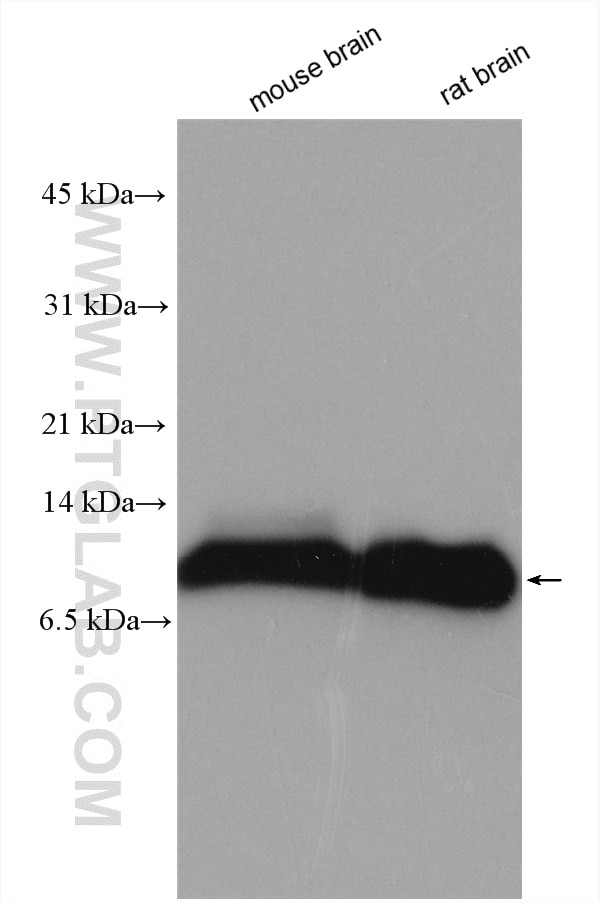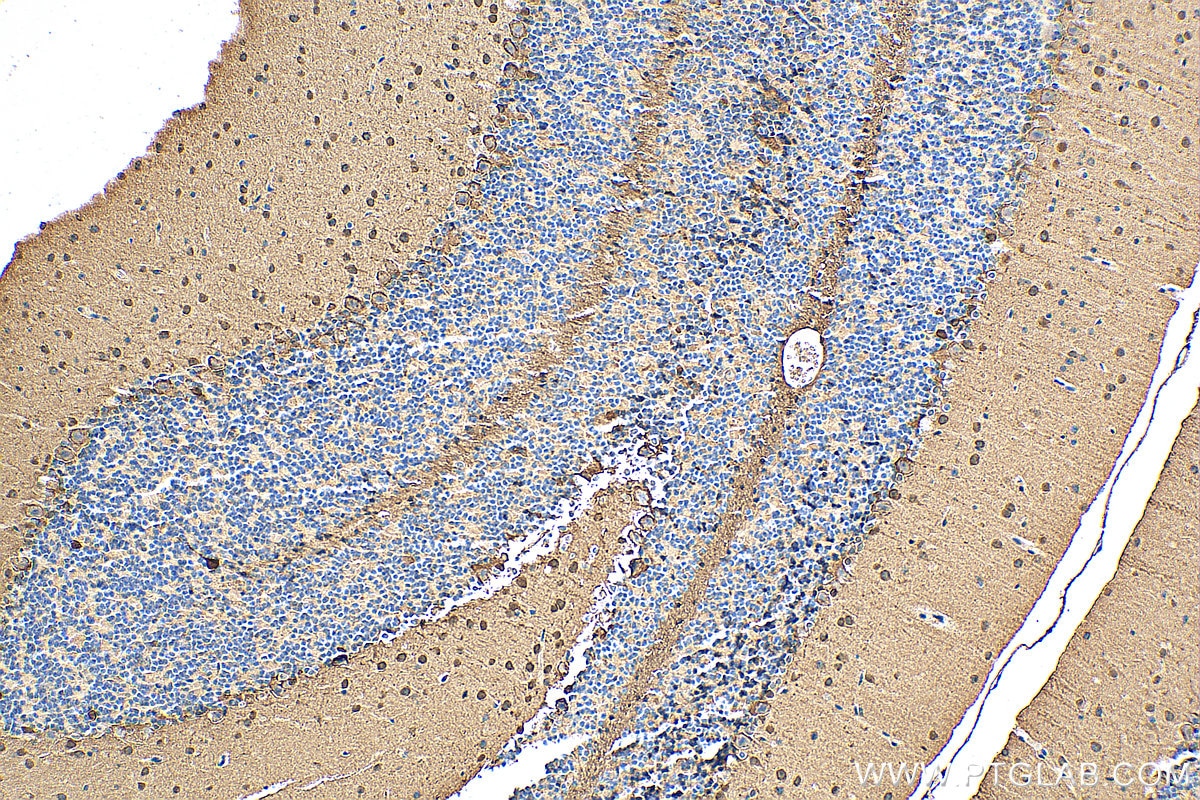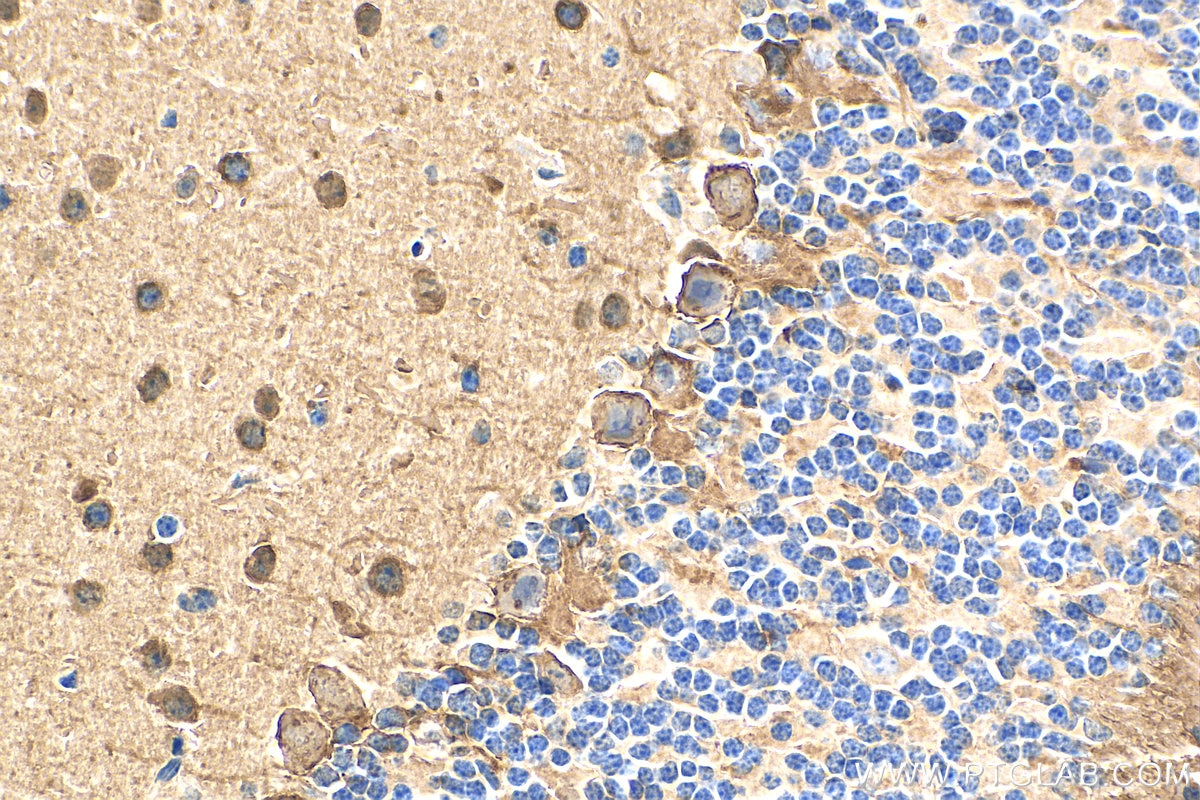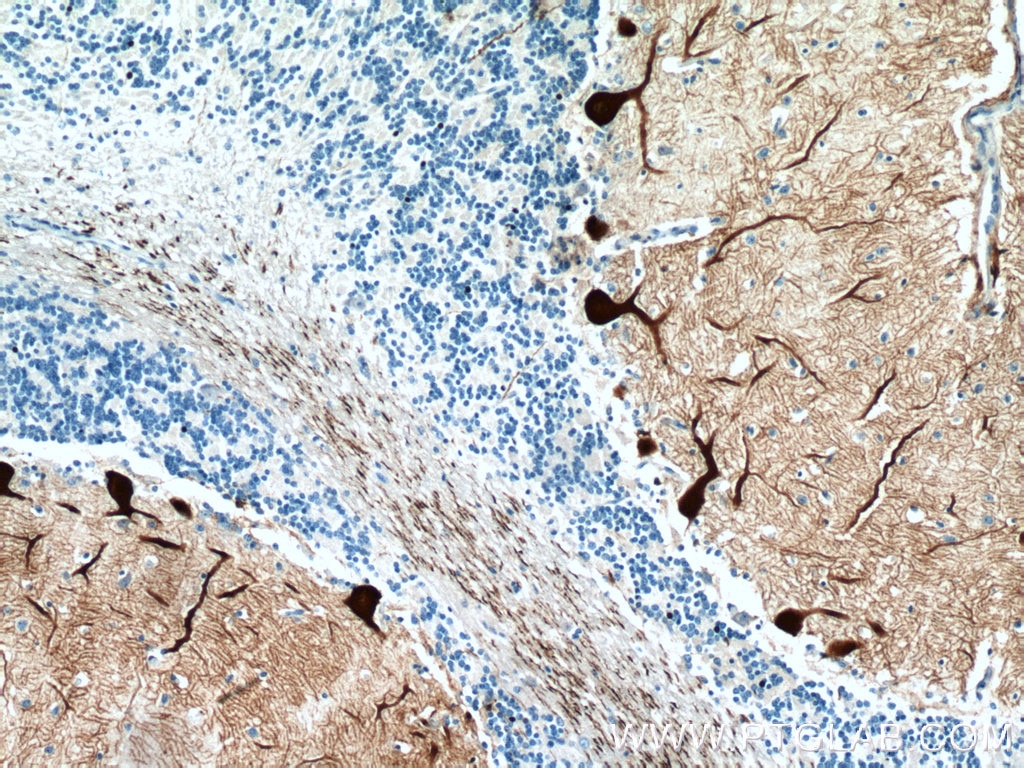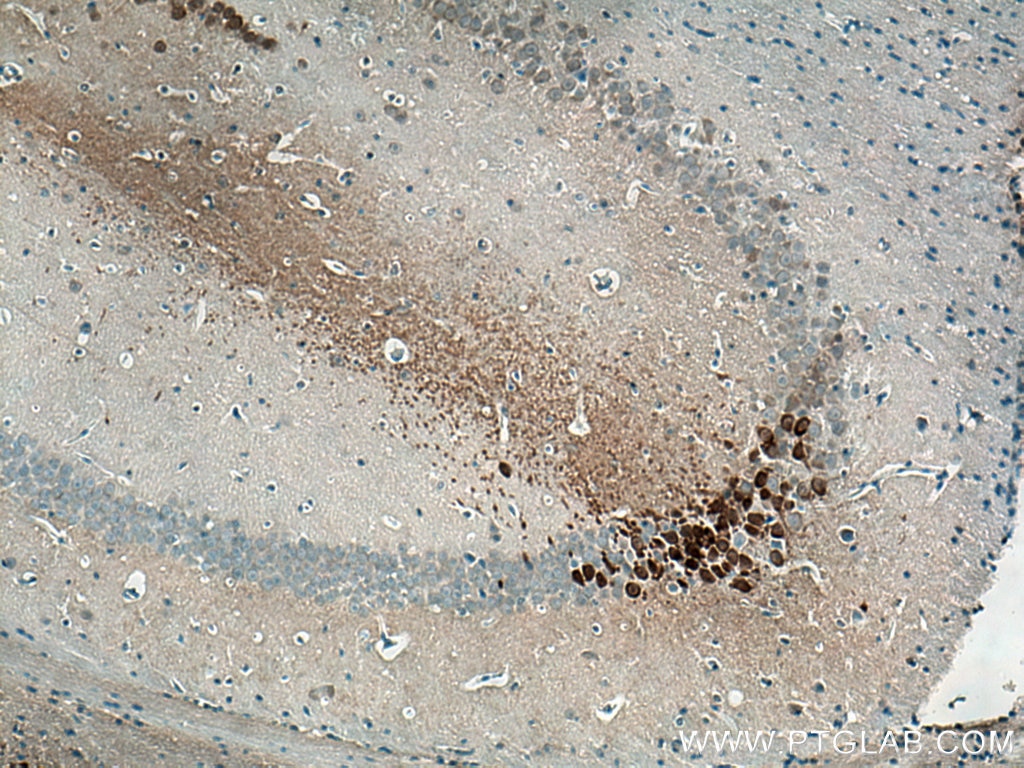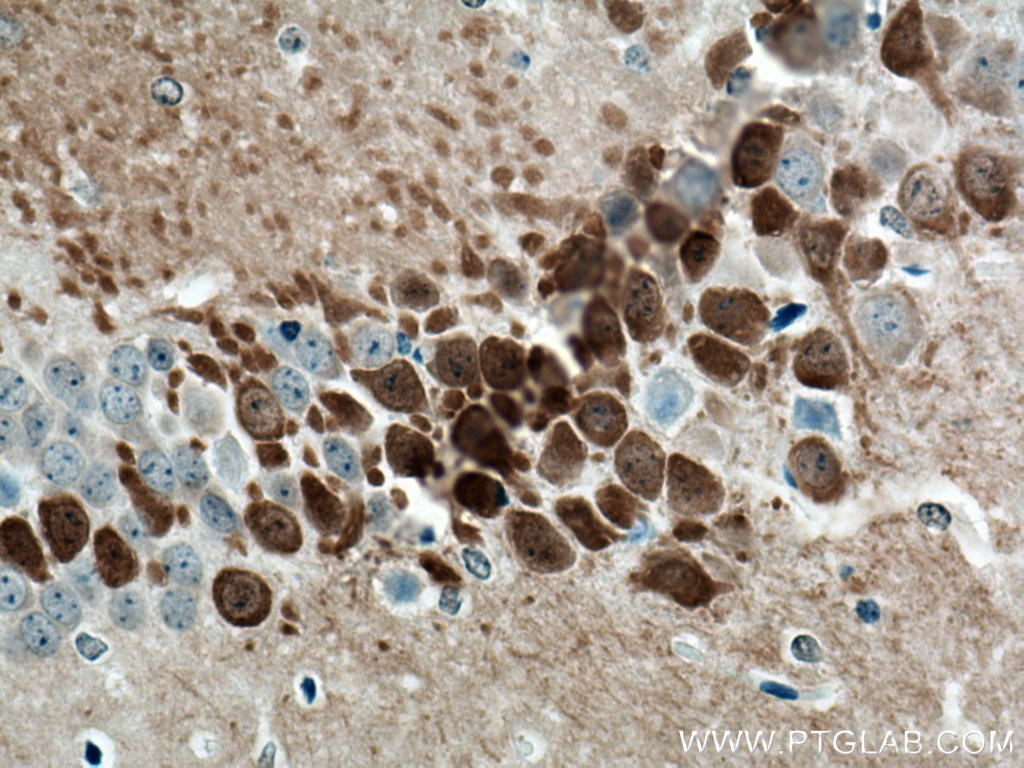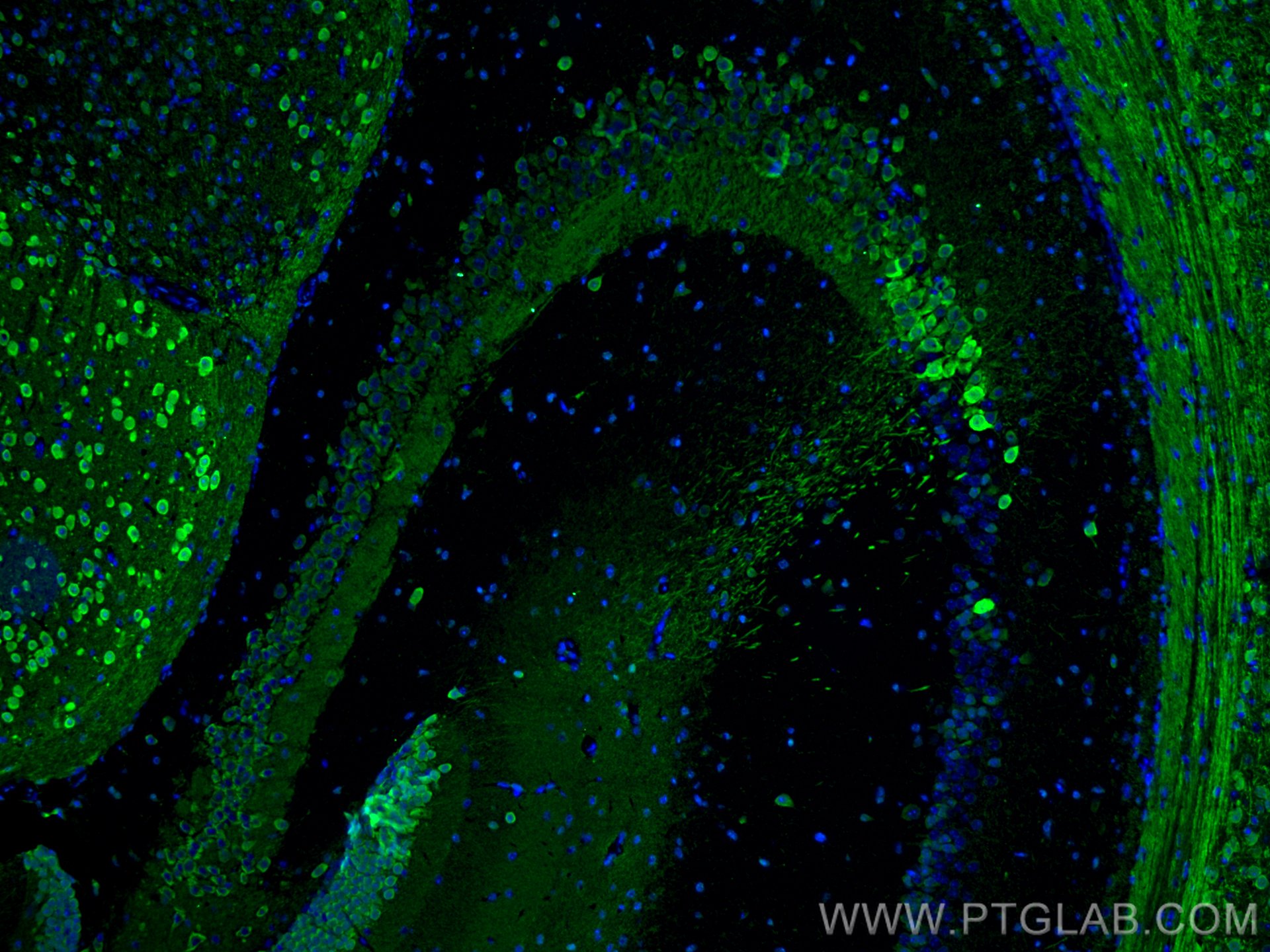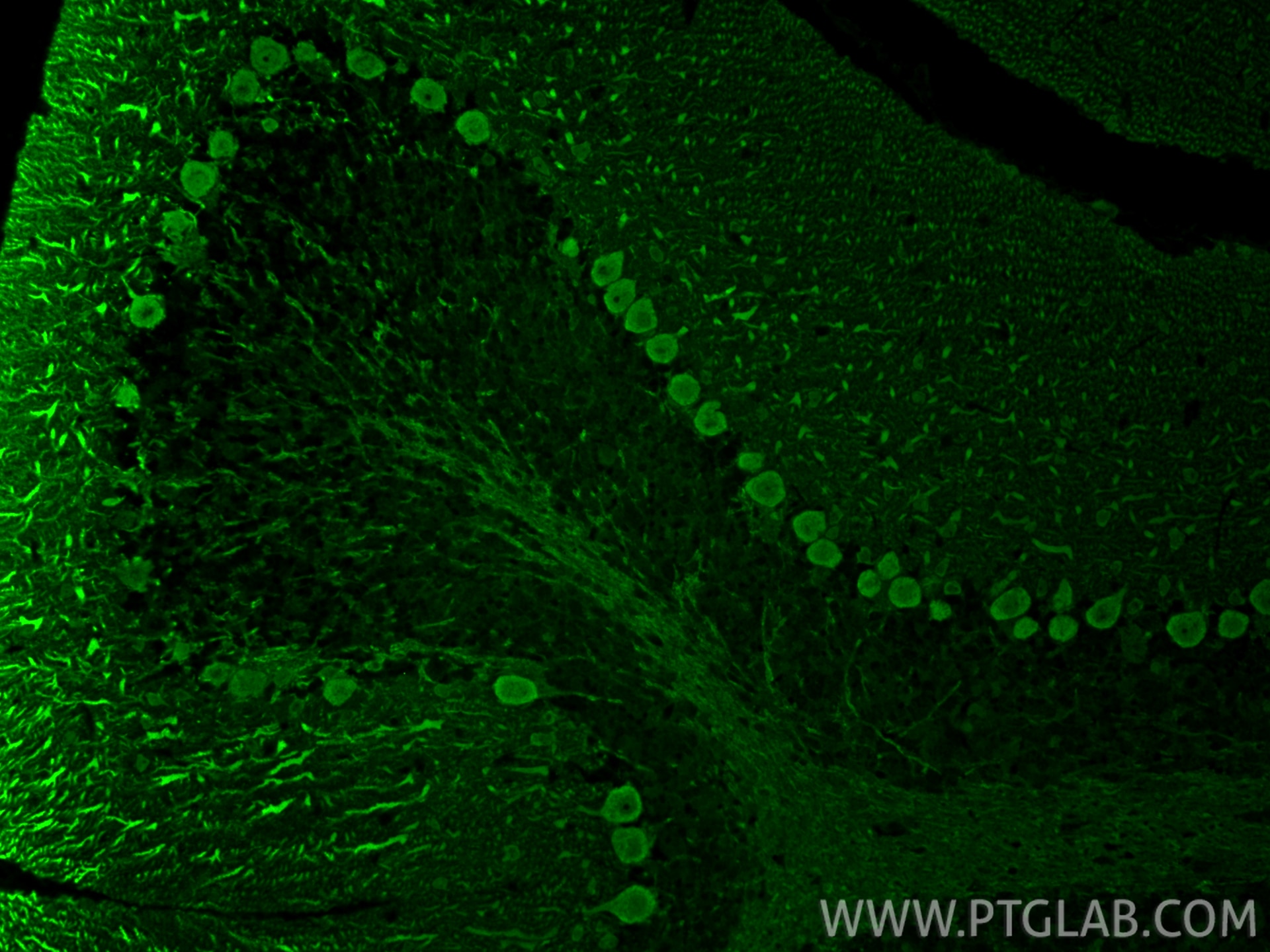Anticorps Polyclonal de lapin anti-PCP4
PCP4 Polyclonal Antibody for WB, IHC, IF-P, IP, ELISA
Hôte / Isotype
Lapin / IgG
Réactivité testée
Humain, rat, souris
Applications
WB, IHC, IF-P, IP, ELISA
Conjugaison
Non conjugué
N° de cat : 14705-1-AP
Synonymes
Galerie de données de validation
Applications testées
| Résultats positifs en WB | tissu cérébral de souris, cerveau de rat |
| Résultats positifs en IP | tissu cérébral de souris, |
| Résultats positifs en IHC | tissu de cervelet humain, tissu cérébral de souris, tissu de cervelet de souris il est suggéré de démasquer l'antigène avec un tampon de TE buffer pH 9.0; (*) À défaut, 'le démasquage de l'antigène peut être 'effectué avec un tampon citrate pH 6,0. |
| Résultats positifs en IF-P | tissu de cervelet de souris, tissu cérébral de souris |
Dilution recommandée
| Application | Dilution |
|---|---|
| Western Blot (WB) | WB : 1:1000-1:6000 |
| Immunoprécipitation (IP) | IP : 0.5-4.0 ug for 1.0-3.0 mg of total protein lysate |
| Immunohistochimie (IHC) | IHC : 1:50-1:500 |
| Immunofluorescence (IF)-P | IF-P : 1:50-1:500 |
| It is recommended that this reagent should be titrated in each testing system to obtain optimal results. | |
| Sample-dependent, check data in validation data gallery | |
Applications publiées
| WB | See 4 publications below |
| IHC | See 2 publications below |
| IF | See 6 publications below |
Informations sur le produit
14705-1-AP cible PCP4 dans les applications de WB, IHC, IF-P, IP, ELISA et montre une réactivité avec des échantillons Humain, rat, souris
| Réactivité | Humain, rat, souris |
| Réactivité citée | rat, Humain, souris |
| Hôte / Isotype | Lapin / IgG |
| Clonalité | Polyclonal |
| Type | Anticorps |
| Immunogène | PCP4 Protéine recombinante Ag6388 |
| Nom complet | Purkinje cell protein 4 |
| Masse moléculaire calculée | 7 kDa |
| Poids moléculaire observé | 8 kDa |
| Numéro d’acquisition GenBank | BC013791 |
| Symbole du gène | PCP4 |
| Identification du gène (NCBI) | 5121 |
| Conjugaison | Non conjugué |
| Forme | Liquide |
| Méthode de purification | Purification par affinité contre l'antigène |
| Tampon de stockage | PBS with 0.02% sodium azide and 50% glycerol |
| Conditions de stockage | Stocker à -20°C. Stable pendant un an après l'expédition. L'aliquotage n'est pas nécessaire pour le stockage à -20oC Les 20ul contiennent 0,1% de BSA. |
Informations générales
PCP4, also named as PEP19, belongs to a family of proteins involved in calcium transduction signals and binds calmodulin via an IQ motif, in a calcium independent manner. It is mainly expressed in ectoderm and neuroectoderm comprising neural crest derived cells.
Protocole
| Product Specific Protocols | |
|---|---|
| WB protocol for PCP4 antibody 14705-1-AP | Download protocol |
| IHC protocol for PCP4 antibody 14705-1-AP | Download protocol |
| IF protocol for PCP4 antibody 14705-1-AP | Download protocol |
| IP protocol for PCP4 antibody 14705-1-AP | Download protocol |
| Standard Protocols | |
|---|---|
| Click here to view our Standard Protocols |
Publications
| Species | Application | Title |
|---|---|---|
Cancer Cell Single-Cell Characterization of Malignant Phenotypes and Developmental Trajectories of Adrenal Neuroblastoma. | ||
Cell Stem Cell Human brain organoids assemble functionally integrated bilateral optic vesicles. | ||
Nat Commun Reliability of high-quantity human brain organoids for modeling microcephaly, glioma invasion and drug screening | ||
Hum Genet Human organoids for rapid validation of gene variants linked to cochlear malformations | ||
J Pediatr Surg CAMK2G Promotes Neuronal Differentiation and Inhibits Migration in Neuroblastoma |
